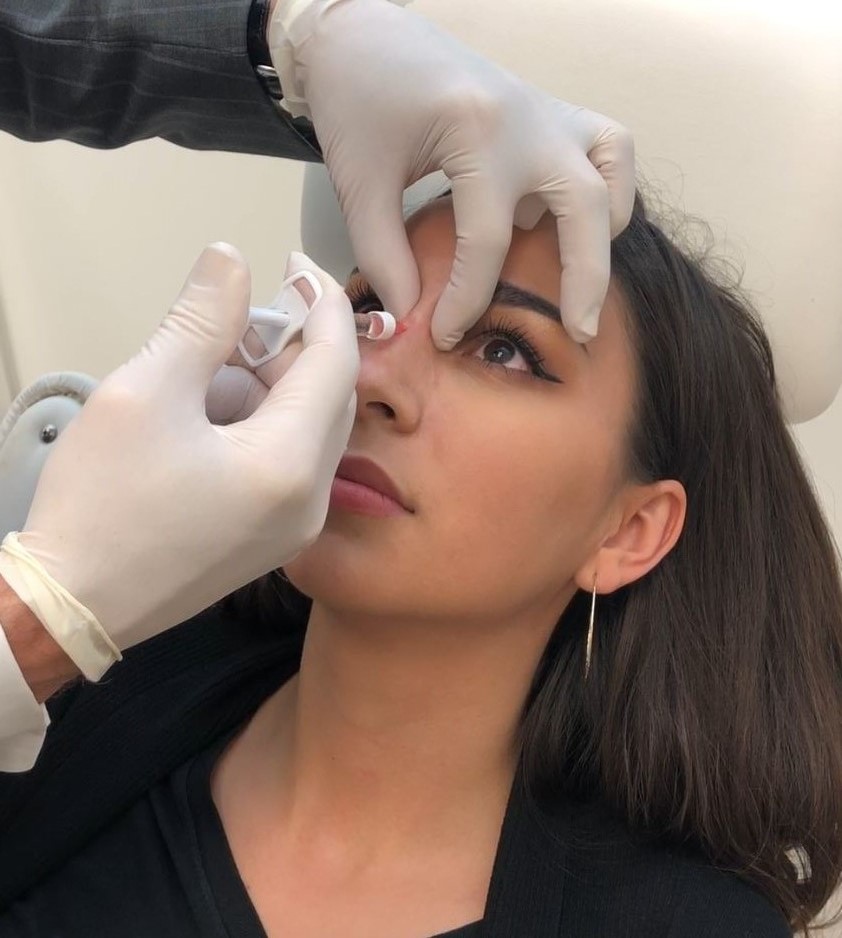Surgical vs Non-Surgical Rhinoplasty in Honolulu
Surgical vs. Non-Surgical Rhinoplasty in Hawaii: Which Path Will Suit You Best?
Rhinoplasty in Hawaii—often called a “nose job”—is one of the most sought-after facial procedures today, and for good reason. The nose is central to your facial appearance, influencing how balanced your features look and playing a significant role in self-confidence. At Hawaii Facial Plastic Surgery, double board-certified surgeon Dr. Susan Tan offers both surgical and non-surgical rhinoplasty options to accommodate a variety of cosmetic and functional needs. If you’re debating which approach is right for you, read on to discover the pros and cons of each method and explore the latest insights guiding this popular procedure.
Why Rhinoplasty in Honolulu Remains Popular
According to the American Society of Plastic Surgeons (ASPS), rhinoplasty consistently ranks among the top cosmetic surgeries in the United States, underscoring its importance for individuals seeking facial harmony. Whether it’s refining a dorsal hump or improving breathing function, this versatile procedure can be life-changing. Below, we break down two distinct approaches: surgical rhinoplasty for permanent transformation and non-surgical rhinoplasty for those seeking a less invasive alternative.
Surgical Rhinoplasty: A Permanent Investment
Surgical rhinoplasty offers a long-lasting solution to both aesthetic and functional concerns related to nose structure. Dr. Susan Tan specializes in this procedure, employing techniques like open and closed rhinoplasty—customized to address unique issues such as:
- A pronounced bump on the bridge
- Wide or large nostrils
- Deviated septum or breathing difficulties
- Previous nasal injuries or fractures
- Drooping or oversized nasal tips
When applicable, septoplasty is performed alongside rhinoplasty to correct a deviated septum, significantly enhancing breathing. During your consultation, Dr. Tan will evaluate your nasal structure and discuss potential outcomes to ensure you achieve a well-balanced look that complements the rest of your facial features.
Key Benefits of Surgical Rhinoplasty
- Permanent Results: The changes you make are intended to last a lifetime.
- Highly Customizable: From subtle tweaks to major reshaping, surgical techniques offer extensive control.
- Functional Improvements: It can address airway blockages and improve overall respiratory function.
- One-Time Recovery: While recovery can last several weeks, it’s typically a single investment of time.
Post-Operative Considerations
Because surgical rhinoplasty involves incisions and potential bone or cartilage adjustments, you should prepare for:
- Bruising and swelling that may persist for a few weeks
- The use of cold compresses and elevated sleeping positions
- Follow-up visits to monitor healing and remove stitches or splints
If you’re ready for a transformative procedure with permanent outcomes, surgical rhinoplasty in Honolulu offers a comprehensive solution for both form and function.
Non-Surgical Rhinoplasty: The Low-Commitment Alternative
By contrast, non-surgical rhinoplasty focuses on minimally invasive enhancements through dermal fillers such as Revance RHA. This approach appeals to individuals seeking minor improvements without committing to surgery. Common goals of non-surgical rhinoplasty include:
- Smoothing out a dorsal hump
- Improving nasal tip definition or height
- Correcting subtle asymmetries
- Softening imperfections from previous surgeries
Because non-surgical rhinoplasty relies on injectable fillers, many patients notice results immediately. Most fillers last 12 to 18 months, though individual experiences vary based on metabolism and the type of filler used.
Advantages of Non-Surgical Rhinoplasty in Honolulu
- Minimal Downtime: Swelling typically subsides within a few days, allowing you to resume daily activities swiftly.
- No Surgical Risks: Avoids incisions and general anesthesia.
- Temporary Results: A reversible option that lets you “test” new proportions before opting for something permanent.
- Immediate Visible Change: You see the effect as soon as the filler is injected.
Potential Limitations
Despite its benefits, non-surgical rhinoplasty cannot significantly reduce large nasal structures or correct severe breathing problems. Surgical rhinoplasty is usually necessary for major reshaping or functional corrections.
What Studies Reveal
Recent medical literature backs the efficacy of both surgical and non-surgical rhinoplasty:
- Non-Surgical Outcomes: A retrospective study by Dr. Ramtin Kassir and associates found high patient satisfaction in over 2,000 cases. Minor complications—such as temporary redness at the nasal tip—were reported, but more serious issues were extremely rare.
- Detailed Filler Analysis: Another extensive review by Dr. Ayad Harb assessed 5,000 non-surgical procedures between 2015 and 2019. The findings showed a quick treatment time (around 12 minutes), minimal discomfort, and an average filler usage of just 0.72 mL. While dorsal humps were a common target (44% of patients), the filler technique also proved effective for correcting prior surgical issues and refining the nasal tip. Adverse events were minimal, reinforcing the importance of an experienced practitioner who understands nasal anatomy.
These studies underscore the safety and effectiveness of non-surgical rhinoplasty for subtle reshaping. However, they also confirm that surgical rhinoplasty remains the go-to for substantial structural changes or resolving significant breathing impairments.
Making an Informed Decision
Ultimately, your choice between surgical and non-surgical rhinoplasty depends on your goals, budget, and willingness to undergo a recovery period. If your aim is comprehensive alteration or to tackle functional problems, surgical rhinoplasty offers permanent relief. On the other hand, non-surgical options let you explore smaller aesthetic tweaks with minimal commitment.
At Hawaii Facial Plastic Surgery, Dr. Susan Tan takes a personalized approach. She begins each patient’s journey with a thorough consultation, and then she helps them decide which procedure best suits their facial structure and desired outcome.
Take the Next Step in Your Rhinoplasty Journey
If you’re ready to redefine your nose and boost your self-image, scheduling a consultation at Hawaii Facial Plastic Surgery is your first move. Located on King Street in Honolulu, our clinic provides a welcoming environment where Dr. Tan and her team will evaluate your facial contours, discuss potential procedures, and guide you toward a confident choice.
Whether you envision a permanent transformation or prefer a trial run with fillers, the path to a refined nose that complements your facial harmony is well within reach. Contact us today to begin your personalized assessment and experience the outstanding care that has made Honolulu facial plastic surgeon Dr. Susan Tan a trusted name in aesthetic medicine.



